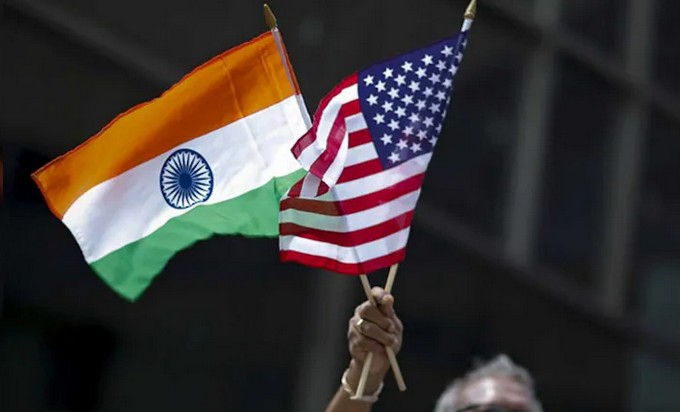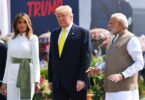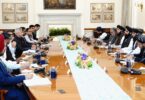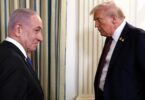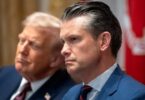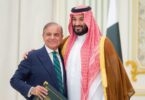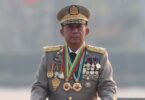On a briefing on Friday, 29 May 2025, the spokesperson of the Ministry of External Affairs, Randhir Jaiswal, pointed clearly that the cessation of firing between India and Pakistan was not the result of the US trade incentives or US mediation.
This came a day after a federal court ruled that the President of the US, Donald Trump, had overstepped his authority to impose tariffs, which was supposed to protect domestic sectors, but would also rise the cost to end consumers, decrease the quantity consumed, i.e. shrink the markets, and decrease competition.
A three-judge panel at the US Court of International Trade, a low profile court in Manhattan, New York, ruled in favor of a permanent injunction, which would technically halt all global tariffs. The court ordered a window of 10 calendar days for administrative orders “to effectuate the permanent injunction.” This meant that the majority of the decisions on the tariffs would be halted if the ruling was held in appeal and possibly in the Supreme Court. Nearly all of the tariff decisions were held back, including the widely publicized 30% tariff on China and the 10% blanket tariff to most goods coming to the US. That excluded, however, the 25% on auto parts, steel or aluminum, which were done under Section 232 of the Trade Expansion Act.
Weekly Media Briefing by the Official Spokesperson (May 29, 2025)
— Randhir Jaiswal (@MEAIndia) May 29, 2025
https://t.co/JEUxSzla90
The reason of the remarks by the MEA spokesman was the claim of the US Commerce Secretary Howard Lutnick in his submission to the court that the ceasefire understanding between India and Pakistan was only achieved after US President Donald Trump offered trading access to the two nuclear-armed neighbours, hence the tariff policy is an effective instrument for international pressure and stimulation. Lutnick's claim stated, “President Trump interceded and offered both nations trading access with the United States to avert a full-scale war.”
From MEA side, Jaiswal stated “From the time Operation Sindoor commenced on May 7, till the understanding of cessation and military firing on May 10, there were conversations between Indian and US leaders on the evolving military situation. The issue of trade or tariffs did not come up in any of those discussions”. Additionally, he added that “the external affairs minister has also made it clear that the cessation of firing was decided upon through direct contact between the DGMOs of India and Pakistan”.
As expected, the US Justice Department has filed a notice of appeal on the ruling.
Still, on 29 May 2025 the appeals court granted a pausing ruling until a decision is made next month, when both sides are expected to submit written explanations defending their positions. The current situation allows for Trump’s plan to continue, but there are no guarantees that this will last past next month.
The decision by the US Court of International Trade comes at a time when Trump’s administration is getting increasingly criticized about its tariff war and the blanket approach they use. Aside from the expected disapproval from the Democrat lobby, there have been numerous instances of Republican heavyweights, who have expressed doubts about the approach or have directly criticized it.
The first major outcry was on 7 April 2025 when Bill Ackman, a billionaire hedge fund manager who used to be a longtime Democratic party donor and switched sides in the 2024 Presidential Elections, and who has been very supportive of Trump’s cessation of funding for various international organisations working under the umbrella of human rights defenders, suggested a 90 day time-out period for the implementation of the tariffs indicating that it would lead to “self-induced, economic nuclear winter”.
The country is 100% behind the president on fixing a global system of tariffs that has disadvantaged the country. But, business is a confidence game and confidence depends on trust.
— Bill Ackman (@BillAckman) April 6, 2025
President @realDonaldTrump has elevated the tariff issue to the most important geopolitical…
Further, on 11 April 2025 he explained that his idea was of a world, where China is countered in a situation where Europe and Japan are treated as collaborators and allies by trading with them at zero tariff rate and where all collude to excise elevated tax on Chinese imports. This situation, according to Ackman, would put significantly more pressure on China.
Now imagine China recognizes that the below outcome is the likely outcome.
— Bill Ackman (@BillAckman) April 11, 2025
If you were China, what would you do?
The answer, I believe, is that you would sit down with @SecScottBessent and @realDonaldTrump and make a deal, and you would do so soon.
China is an incredible… https://t.co/FeVtPe7Kae
Theoretically, it is a sound idea and it suffers only from inability to predict the behavior of states, which might be opposing – like Hungary for example, or even Germany, which while vocally supporting pro-EU policies, is often engaged in bilateral trades, which only benefit them (such as the LNG imports or any of the immigration issues). It is very likely that a large portion of Wall Street, if not most, would support a similar plan.
But then 23 May 2025 came when Trump threatened to impose a 50% tariff on imports from the European Union, which was a clear indicator that the Ackman approach was not something the current administration was considering even on a basic level. The trade talks among Japan, South Korea and China earlier this month also suggested that even the closest US allies, who should be theoretically exposed the most by the Chinese growth, did not think that the US could be a close trading partner or at least not one that could allow for long term planning. Logically, a case-by-case transactional policy should be adopted.
Wall Street is also showing signs of tiredness from the ongoing uncertainty. When the markets crashed in the beginning of April on the so called Liberation Day (the tariff announcement), SP500 erased over 12% of its value in a few days. After that, however, stocks rallied gaining 19.6% in 5 weeks, which is generally a good return for a year. The threat for the 50% tariff on EU goods followed, including comments about the Russian-Ukrainian war, and the markets reacted again with a 2.7% correction.
Another bounce back followed and this brought to the front what many traders had already communicated among each other – the TACO trade, which stands for Trump Always Chickens Out. Roughly speaking, this involved having enough cash in moments of announcements of drastic policy measures, so that investors can buy when the market crashes with the clear expectations that recovery will be very soon and possibly exceeding pre-announcement levels, thus profiting from the trade.
While this is a Wall Street folklore, it is important to note that its participants are interested almost always in maximizing their profits, i.e. rather than focusing on political ideologies, they pay extreme attention to the dynamics of the decision makers. As such, patterns are analysed obsessively by humans and logarithms and favorable trades are made based on that. The TACO trade came up not because politically motivated publications created stories fitting their agenda, but because those patterns exist. Which means that Trump might not be actually fearing the consequences in the 11th hour, but that for one reason or another, this is the sequence of events, which keeps on repeating.
Needless to say, this brings a great amount of insecurity on the markets, but among policy makers as well. Announcements of bold policies followed by a 180 degree turn within very short periods do not make for a favorable environment for long-term negotiations when the other side knows that each decision can be annulled literally next week. It is very possible that this is what happened when Vice President of the US J.D. Vance visited India in April. His comments were that India PM Narendra Modi was “a tough negotiator” and no further specifics were given. This is indicative that whatever the US delegation came to India for, they came back to Washington with less than what they had expected.
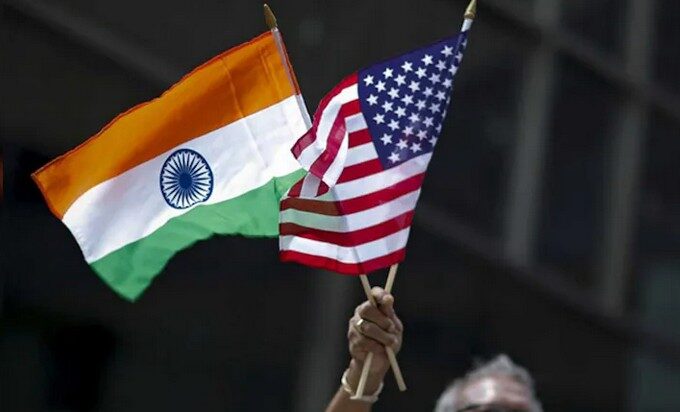
It is also indicative that, considering the situation, the US lived up to far less than what would be expected from a close ally. The visit coincided with the Pahalgam massacre on 22 April 2025 and while US officials condemned the terrorist attack, they never pointed the finger to Pakistan.
On the day JD Vance was departing India, 24 April 2024, Pakistan’s Minister of Defence Khawaja Asif announced on an interview with Sky News that Pakistan had been supporting terrorism on behalf of the US and the UK for over 3 decades. This was a very bold move for an official representative of the country to confirm what used to be described as a conspiracy theory and suggested a fallout with Washington and possibly building closer ties with Beijing. It was very hard to refute India’s claims about state sponsored terrorism originating in Islamabad.
Other solid confirmations came later. In the aftermath of Operation Sindoor, pictures from the funerals of the eliminated terrorists showed that they were done with state honors, attended by high ranked government officials and by internationally designated terrorists. Furthermore, the person who was the alleged mastermind of the Pahalgam attack, a Lashkar-e-Taiba commander Saifullah Kasuri, was spotted together with Talha Saeed, the son of the UN-designated terrorist Hafiz Saeed, speaking at an anti-India rally in Lahore in late May 2025, organized by the Pakistan Markazi Muslim League (PMML).
🚨🇵🇰👹 Birds Of A Feather Flocking Together
— OsintTV 📺 (@OsintTV) May 29, 2025
Pahalgam Attack Mastermind Terrorist Saifullah Kasuri Seen At Public Rally with Speaker Of Pak Punjab Assembly Malik Muhammad Ahmed Khan along with Talha Saeed Son of Hafiz Saeed UN Designated Terrorist
Date: 28-05-2025
Place :… pic.twitter.com/8R7scryW5C
🚨🇵🇰👹 #Exclusive
— OsintTV 📺 (@OsintTV) May 28, 2025
All the top Lashkar terrorists gathered at one place
After the #OperationSindoor Talha Saeed, the son of UN-designated terrorist Hafiz Saeed, and Saifullah Kasuri, the deputy chief of Lashkar-E-Tayiba, who had been in hiding for several days, attended the… pic.twitter.com/B64eW7hwFL
The simple question would be – how could a state, claiming in the UN to be having an active counter-terrorism policy, allow for this if it is not a state policy as it’s officially stated. Additionally, if India was the close ally of the US, as visible by the vocal announcements by Trump and J.D. Vance, then why was not India’s clear enemy criticized even a single time during these events?
Clearly these are questions, which resonated strongly with the general Indian population, as well as with its leadership, and the nearly daily remarks by EAM Jaishankar just prove that.
The last visit by the former National Security Advisor Jake Sullivan in January was all about defence and nuclear energy treaties associated with the sale of the AP1000 reactors by Westinghouse to India. It is likely that the J.D. Vance’s visit followed the same lines and they needed to reach an agreement for which India would likely get “access” to the US market (e.g. lower tariffs than others). The legal hurdle associated with the nuclear reactors, namely the producer responsibility stemming from a possible future malfunction, however, still exists and is unlikely to be removed anytime soon.
Additional problems possibly included the purchase of F-35 fighter jets, but Washington’s hesitancy to share the source code, which controls the jet’s software and its upgrades, imposes a geopolitical risk, which Delhi cannot take. While India has spent USD 20 billion in the last 15 years for defense equipment from the US alone, the F-35 deal is on a permanent standstill and the Chief of the Air Staff of the Indian Air Force, Air Chief Marshal AP Singh, told reporters that India is not considering the F-35 option. If the US wants to have the ultimate control over the jets, then how can they guarantee that those jets that can be used in events, such as Operation Sindoor, will not be stopped?
With or without the US, India has to move on and the country has no other choice. The short term condition setting by the Trump administration is conflicting with the long-term strategy, which the country is trying to implement. It is clear that in both defense and nuclear energy production, other solutions should be sought. But in order to be a super power, the only way forward is to develop indigenous solutions. In-house production is the only way that guarantees that India can get the defense power it needs without compromising on foreign relations. Additionally, if a state run company like ISRO can land an apparatus on the Moon and do that effectively, then given the right organization a state run company should be able to produce efficient non-thorium nuclear reactor, which can secure the energy independence of the country.
How can all this be funded? The country clearly needs to change the trade deficit by becoming a more export oriented economy and in order to do that, it needs to stop the Foreign Direct Investment (FDI) outflow. On 21 May 2025 the Reserve Bank of India published in its latest bulletin (https://www.rbi.org.in/scripts/bs_viewbulletin.aspx) where it showed that the net FDI dropped 96.5% to USD 353 million in fiscal year 2025, down from USD 10 billion the year before. Even the previous levels were significantly lower than those in 2020-2021 when the net FDI exceeded USD 43 billion. Explanations came that this was the result of several major exits by private equity firms indicating that the market was mature enough to sustain such exits.
This, however, is half the story, because net FDI decrease simply means that more money found its place outside of India for one reason or another. The private equity sector did not stop existing overnight – just the owners with those profitable exits thought that future investments should be made elsewhere. The biggest factors for such decisions are decrease of profitability and decrease of security (resulting in the former as it does not allow for long term planning, which is essential for any investment). It is imperative that policy makers must make this a priority in order to be able to fund the future plans. Otherwise India will continue to look for outside solutions and will get into the debt trap, which would alter its foreign policy to the point of dependency for every major decision.
All views are personal.


